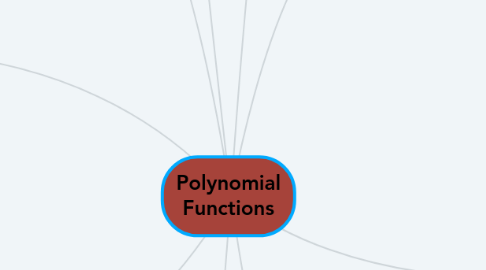Polynomial Functions
by Dacia Harrison


1. Key Vocabulary:
1.1. End behavior: Is defined as what is going on at each of a graph.
1.2. Leading coefficient: The coefficient of the term of highest degree.
1.3. Local minimum: Is a value less than any other value in the region around it.
1.4. Local maximum: Is a value greater than any other value in the region around it.
1.5. Monomial: An algebraic term consisting of one term.
1.6. Multiplicity: Is the number of times it appears in the multi-set.
1.7. Polynomial: Is a algebraic term consisting of several terms.
1.8. Polynomial Function: is a function involving only non-negative integer powers of x.
1.9. Synthetic division: Is a shortcut, method of polynomial division in the special case of dividing by a linear factor.
1.10. Turning point: a point at which there is a change in direction or motion.
2. 3.4 Factoring Polynomials
2.1. In this section we will factor polynomials. The key thing to remember is that if a polynomial is divided by any of its factors, the remainder is 0. According to the Factor Theorem, for any polynomial p(x), (x-a) is a factor of P(x) if and only if P(a)=0.
3. 3.5 Finding Real Roots of Polynomial Equations
3.1. In this section we will learn how to find the roots, zeros, and solutions. We can do that by setting the polynomial to zero and solving for x. Sometimes a polynomials equation has a factor that appears more than once.
4. 3.8 Transforming Polynomial Functions
4.1. In this section we will be transforming polynomial functions just like we did with quadratic and linear functions
4.2. Transformations like Vertical translation, Horizontal translation, vertical stretch/compression, Horizontal stretch/compression, and reflection will be in this section.
5. 3.2 Multiplying Polynomials
5.1. In this section we will learn how to multiply monomials and polynomials by distributing. We will learn about binomial expansion, binomial expansion goes with Pascal's Triangle. The pattern can be applied to any expansion.
6. 3.3 Dividing polynomials
6.1. In this section we will learn how to divide polynomials with long division. In this section we will also learn how to do synthetic division. It is a shorthand of dividing a polynomial by a linear binomial . For synthetic division to work the polynomial must be written in standard form.
6.2. Examples of standard form: 5x^3+2x^5-3x^4+x^2-3 The standard form of this would be: 2x^5-3x^4+5x^3+x^2-3
7. 3.6 Fundamental Theorem of Algebra
7.1. In the section we will learn about The Fundamental Theorem of Algebra. This Theorem states that every polynomial function of degree greater than 1 has at least one zero, where a zero may be a complex number. To find all roots of a polynomial equation use a combination of the Rational Root Theorem, irrational Root Theorem and methods for finding complex roots for example quadratic formulas.
8. 3.7 Investigating Graphs of Polynomial Functions
8.1. In the section we will graph polynomial functions. They will be classified by their degree. We will also find the end points of these graphs and their local minimum or maximum
8.2. Example: 3x^2+x, the degree is 2 so it would be a Quadratic; therefore, it will be a parabola.
9. 3.1 Polynomials
9.1. This section is about identifying the different types of polynomials, finding the degrees of the polynomial and classifying polynomials by its degree. We will also add and subtracting polynomials by combing like terms. In this section we will also graph higher-degree polynomials.
9.2. New Vocabulary:
9.3. Degree of a monomial: Is the sum of the exponents of the variables.
9.3.1. Ex: 4ab^2b^1, the degree would be 3.
9.4. Degree of a polynomials: Is the term with the highest degree.
9.4.1. Ex: 5x^3+6x^2+4x, the degree would be 3 because it is the highest degree plus it is attached to the leading coefficient.

